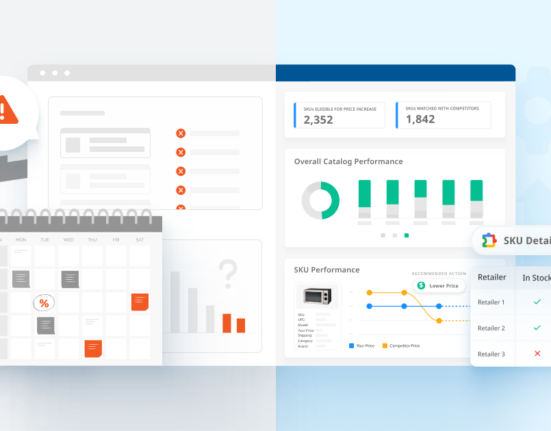Are there winners at the end of price wars? Not really. Some people may feel that lower prices are better for consumers, but bottom-barrel prices equal tiny margins for businesses. And that can lead to reduced services, lower quality products, less competition, and many other concerns.
Put simply, you can’t compete with price wars. Unfortunately, they are increasingly common in the age of eCommerce. Online retail makes it easier than ever to monitor competitors and aggressively price in search of an edge.
That’s a high-risk strategy.
Instead, you should say no to price wars. Here are four ways to protect your margins without racing to the bottom of online prices.
Determine Price Elasticity
The first step you should take is to determine how elastic your products are within your market. Price elasticity refers to the impact a price change will have on the demand for a specific product. An elastic product is very sensitive to a price change, while demand remains stable for an inelastic product.
The result is that you can adjust prices more comfortably for inelastic products than elastic ones. This is an important distinction when competing based on price. Say you see competitors selling at lower prices. You know you have an inelastic product—price changes will have a very small impact on demand for your brand. In this case, don’t engage. Let them drop prices. Determining elastic or inelastic products will help you decide whether to go to war in the first place.

Provide a Unique Value
This strategy sounds simple but is deceptively tricky: product value. Your online products should stand apart from your competitors and provide a value unique in the industry. Take Casper for example. The bed-in-a-box digital-first brand differentiated itself from the competition with convenience. Customers were able to order a Casper mattress online, skipping the awkward and pressurized in-store mattress sales environment. People loved the concept of buying a bed from the comfort of their own homes and having it arrive on their doorsteps within days.
This value-add gave Casper more pricing flexibility because it offered something few others did at the time. A similar approach can help you skip out on price wars. Price signifies prestige and you’ll want to maintain that prestige.
Develop a Brand Reputation
Next up is your brand reputation. How your brand is perceived by your customers directly affects your prices. Apple is a prime example of this in action. Apple has a prestigious reputation in the world of consumer electronics. The result is that the company can price with minimal outside pressure. It doesn’t matter how Samsung prices its phones—Apple is a premium brand and commands premium prices.
While we all won’t be Apple, we can work toward a strong brand reputation. Focus on those product differentiators and quality service. Ask your loyal customers for feedback and listen to what they have to say. Then, do what you can to craft a customer experience that people love. Reputation is a long-term strategy, though, so you’ll have to be patient with this one.
Establish MAP policies
The last important strategy to protect your company from price wars is a MAP policy. Minimum advertised prices in the U.S. set a floor for how retailers advertise your prices. This is very handy online, as your products could be sold across multiple marketplaces. MAP tells everyone to advertise a price no lower than a specified amount or risk losing out on supply.
Typically, most businesses set a MAP that protects their margins. This would reduce the likelihood that your products are priced too low. As a bonus, many competitive categories are susceptible to price decreases. One brand drops prices, all brands drop prices. MAP decreases the chance that you will be the catalyst for a price war because the floor is set. Your competitors will likely follow suit and have similar MAP policies.

Stay Informed to Prevent Price Wars
Above all else, stay up-to-date regarding online prices. You’ll need to know what your competitors are doing and what the marketplace demands. The world of online retail is competitive and fast-paced, and the well-informed are better positioned to thrive.
With Wiser, we offer several pricing solutions that can help you gain a competitive advantage in eCommerce. In addition to MAP monitoring, our pricing intelligence provides competitive insights, so you can closely track price fluctuations. Our online repricing solution automates repricing based on your rules and requirements. Guard your prices, monitor MAP, and stay out of price wars.
Connect with Wiser today to learn more.
Editor’s Note: This post was originally published in October 2018 and has since been updated and refreshed for readability and accuracy.









